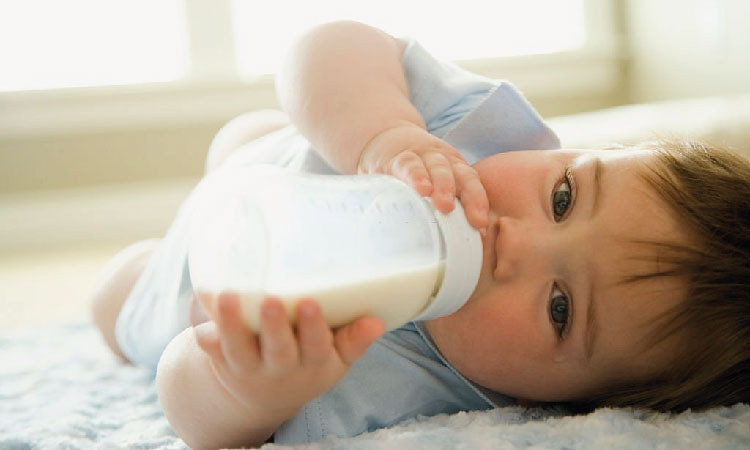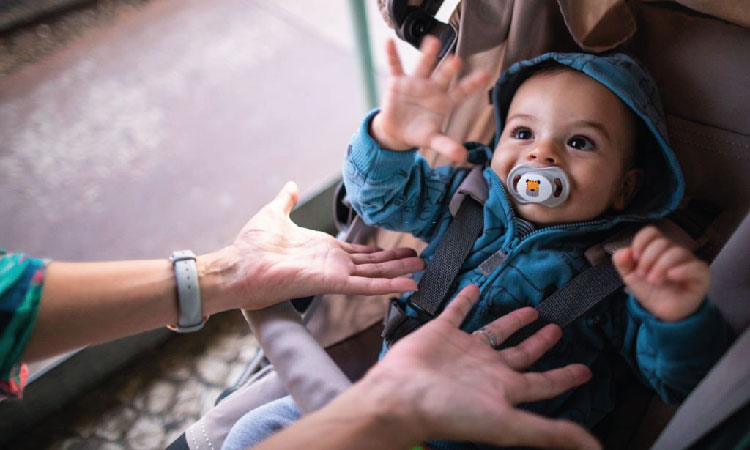Your two-month-old is growing quickly and may reach some important baby milestones, like sleeping for longer stretches at a time, getting on a more regular feeding schedule, and, most exciting of all, smiling. Babies of this age are quite gregarious and like interacting with other people. Here are some of how your infant will be developing, learning, and changing throughout this enchanting period.
Important Development Milestones For 2 Months Old Babies
When your baby is 2 months old, he or she may become more interested in the outside world and cry less often. Your infant is not yet mature enough to follow a predetermined routine. On the other hand, they might have developed a routine of more regular feeding and sleeping by this point. Look out for these important milestones for two-month-old babies:
- During the second month, the baby’s visual coordination strengthens. Your baby’s eye movements will become more intentional and focused this month. For example, your infant may be able to follow a moving item in front of them1
- As early as the second month of life, your baby will start to show interest in other people. Additionally, when you speak to your child, they will turn their gaze towards you since they recognize you. Some may even resort to sucking on their own hand as a means of self-soothing2
- When they are picked up or talked to, they become more at ease. When you go up to them, they act as if they are delighted to see you3
- By the second month, you should expect to see your baby’s first social smile4
Related Reading: Which Is The Best Baby Massage Oil For Strong Bones?
Development Milestones For 2 Months Baby
Two-month-old babies are gaining more control over their bodies. Listed below are common developmental milestones for 2-month-old babies5
- Your infant is developing into a better listener and can now recognize familiar voices among a variety of other noises
- Babies of two months can focus on an item or person up to 18 inches away. Although you’ll still need to come near, the baby will have a good view of your face
- Exhibits sentiments by crying or smiling
- Moves their limbs with greater ease
- Your two-month-old lacks the motor skills necessary to engage in toy play. On the other hand, she/he may start trying to reach anything bright and shiny6
- You may even try to get your infant to grasp a toy with one hand for a few seconds
- They start bringing their hands up to their lips
Related Reading: 7 Common Choking Hazards For Babies At Home And What Can You Do?
Feeding Milestones

At the age of 2 months, your infant will still be feeding constantly throughout the day7
- The two-month-old will be able to suckle and swallow without any difficulty
- The average feeding schedule for a breastfed infant is every 3–4 hours
- Every three to four hours, a 2-month-old on formula will consume about 4 to 5 ounces of formula
- Babies tend to suck by moving their tongues back and forth
- Baby will easily latch onto his or her mother’s nipple or a bottle
- If the baby is sleeping, they may be able to go longer stretches between feedings
- Around six weeks, infants typically experience a growth spurt8. A growth spurt is a period of rapid, dramatic growth that occurs over a relatively brief time frame
- Due to their increased appetite, this may make them fussier. It may seem like you’re constantly feeding, especially at certain times
Related Reading: 10 Indian Baby First Foods 4-6 Months
Sleep Milestones
Two months is still early in the development of your baby’s regular sleep schedule. Babies typically sleep between 14 and 17 hours a day at this age9. However,
- Your infant may begin to develop a more consistent wake-sleep schedule. This means they may have regular nap times and be awake for about an hour or two in between the naps
- Typically, a two-month-old will take two naps in the morning, two in the afternoon, and one in the evening, and have brief bouts of sleep at night
Related Reading: When Can A Baby Sleep With A Pillow?
Speech Milestones
Crying is the primary means of expression for a 2-month-old. Babies don’t start saying words for another month or so, but by the end of the second month, you may hear some cooing10. It’s a sign that your infant is learning to communicate with you. Also,
- Your infant or toddler might start copying your facial expressions
- It does not only cry but also makes other sounds
Physical Milestones
The baby will have put on some weight by the end of the second month because of the rapid rate of growth that occurs during this time11. Also,
- Control over the head and the neck is improved. They still need head and neck support, but they’re getting stronger
- Coordination of movement is a skill that babies begin to develop around the 2-month mark
- Their jerky arm and leg movements from birth have been replaced by more fluid motions
- More tummy time means better muscle control for your baby
- They appear taller and leaner as their muscles are developing and allow their arms and legs more range of motion
- Your infant will begin to explore their hands and fingers around the 2-month mark
- They reach out with open palms, ready to grab something (even though they don’t know how to release their grip just yet). They could also make a fist or clasp their hands together
- They will vigorously kick with both legs
- When lying on the stomach, raises the head and begins to push up with the arms
- When overstimulated, exhibits yawning and an arched back posture
Related Reading: How To Make A Baby Laugh? 12 Ways To Make Her Giggle!
How To Keep A 2 Month Old Baby Busy

2-month baby activities are a wonderful way to make your little one active and promote overall development. Playing with your baby is a good way to get closer to them and strengthen your relationship with them. This list will help you figure out things to do with a two-month-old baby outside and indoors.
- Toss a toy in front of the infant. Move it from one side to the other so the child can see it with her eyes. It helps with the visualization and visual tracking
- Talk to your child. Use a variety of facial expressions while talking to your infant. See to it that she understands your message. Maintain regular eye contact and frequent use of their name. The baby should realize that you are communicating with them
- Sing a lullaby. This is one of the things to do with a two-month-old inside and outside. According to UNICEF’s experts, music promotes healthy brain growth and helps babies unwind before bed12
- Tummy time not only entertains the baby, but it also helps them grow muscles, improve neck strength, and expel gases, therefore preventing colic
- Take your baby outside. Show her birds, trees, buildings, sky, flowers, automobiles, or anything. Point out items as you stroll your baby, This could contribute to cognitive development
Related Reading: Top 9 Indian Home Remedies For Fever In Babies
When To See A Doctor
Even though the development of each child is unique, you should make an appointment with your pediatrician if you notice any of the following in your 2-month-old13
- Having trouble latching on while breast- or bottle-feeding
- During feedings, a lot of milk runs out of the side of his mouth
- The 8-week mark passes without a smile
- Doesn’t bring his hands to his mouth
- Has no reaction to loud sounds
- Not capable of following moving targets
- Cannot keep his head up when lying on his stomach
- Picking them up to comfort them has no calming effect on them
- There appears to be a physical imbalance on one side of their body
Conclusion

New parents experience a roller coaster of emotions during their child’s first few months. Don’t be reluctant to seek guidance when you’re stuck. Your pediatrician is your first and best resource, but friends and family can fill in the gaps.
There is a wide range of possible developmental milestones for a child at two months of age. At this age, failure to reach a developmental milestone is not indicative of a problem. However, if you’re worried that your baby might be showing signs of developmental delay, make sure to bring those concerns up during well-child visits.

